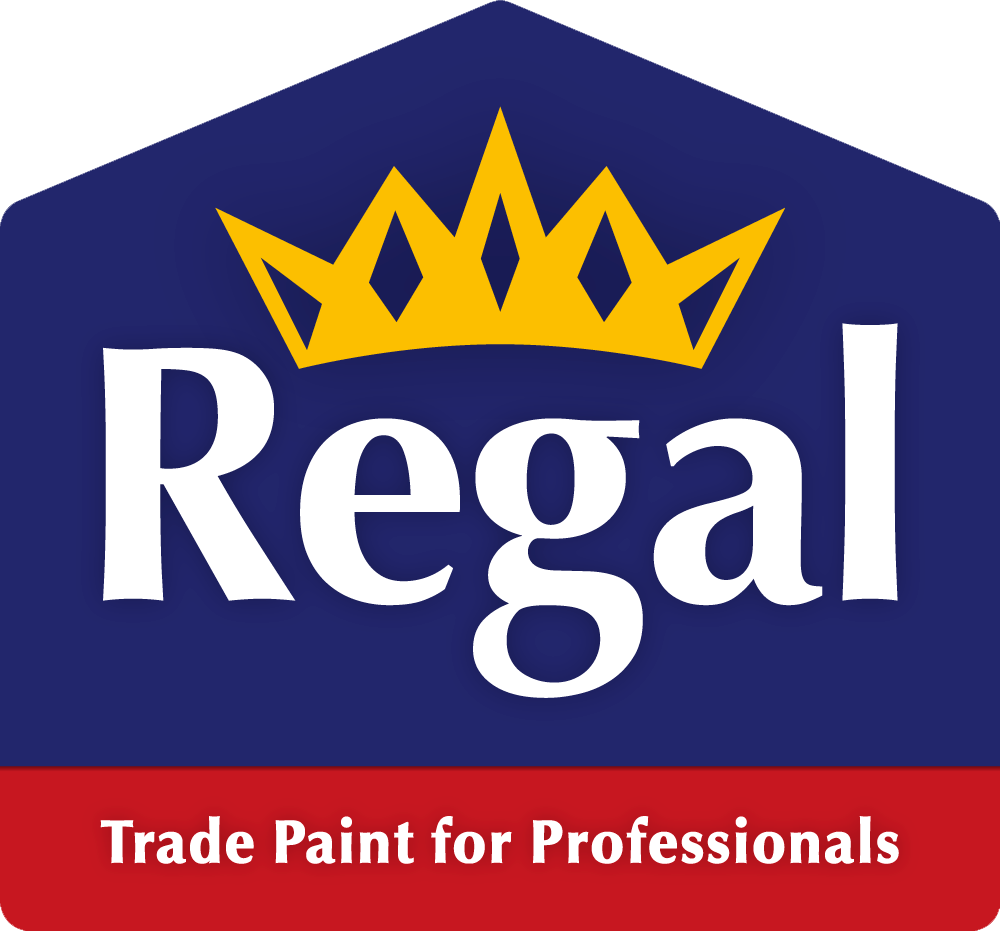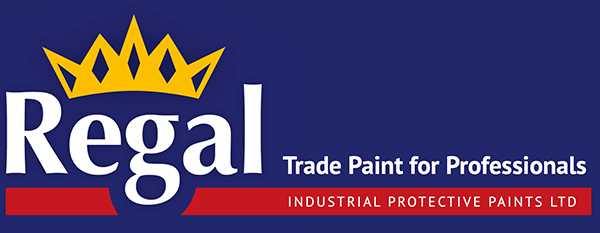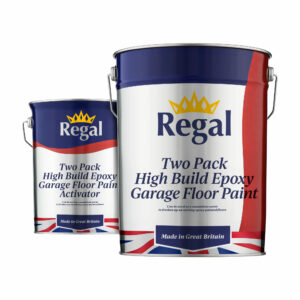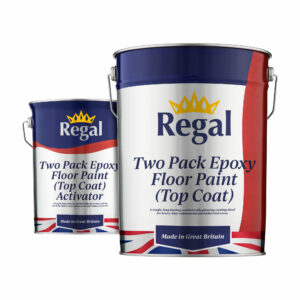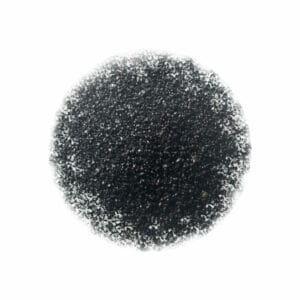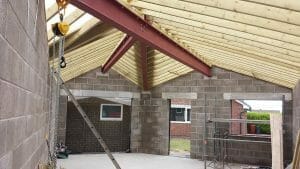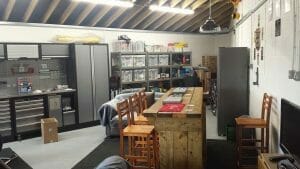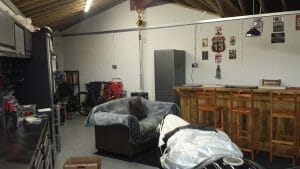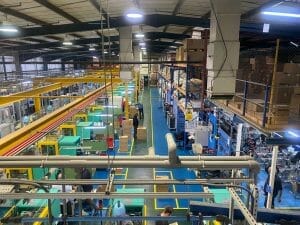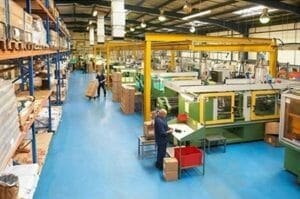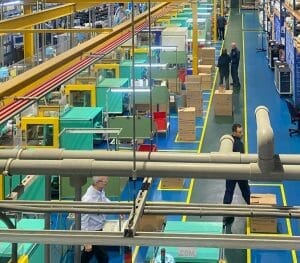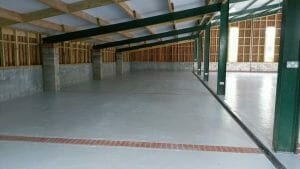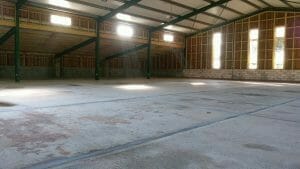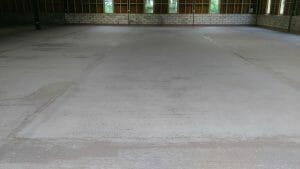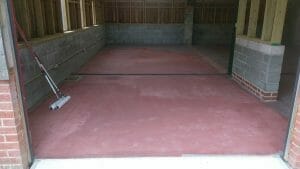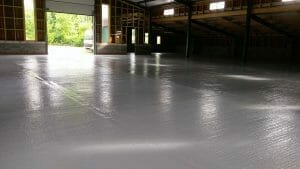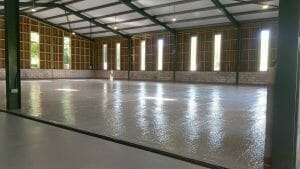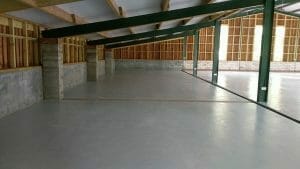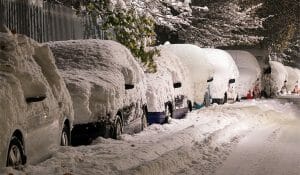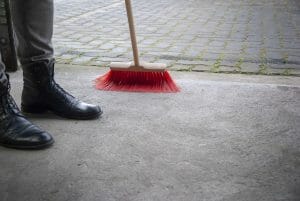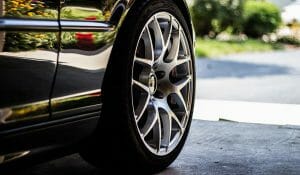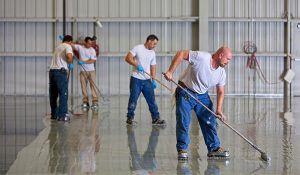Epoxy Floor Paint
Our epoxy floor paint is our most hard-wearing and durable floor coating. If you have never used two-pack epoxy floor paint, or are even unsure what it means, please visit our floor paint home page for more information.
Two Pack High Build Epoxy Garage Floor Paint - Designed for application to concrete, cement and non ferrous metals. Excellent resistance to water, solvents, acids, alkalis and salts. Gives superb adhesion to all recommended substrates. Tough finish has long lasting abrasion and impact resistance. Recommended for areas receiving heavy traffic (vehicle / trucks). - Coverage: 5-7 m² per litre - Touch Drying Time: 12-16 hrs - Recoat: 24 hrs - Hard Drying Time: 48 hrs - Full Cure: 7 days
Two Pack Epoxy Floor Paint (Top Coat) - This epoxy floor coating is designed for application to concrete, cement and non ferrous metals. It provides excellent resistance to water, solvents, acids, alkalis and salts and gives superb adhesion to all recommended substrates. Tough finish has long lasting abrasion and impact resistance. Recommended for areas receiving heavy traffic (vehicle/trucks). Following application of the product: Do not park vehicles or place heavy equipment on the floor for a minimum of 48 hours Do not get the floor wet for a minimum of 7 days as this will cause bloom (discolouration) - Coverage: 5-7 m² per litre - Touch Drying Time: 12-16 hrs - Recoat: 24 hrs - Hard Drying Time:48 hrs - Full Cure: 7 days
Two-Pack Epoxy Floor Sealer (Under Coat) - This epoxy floor paint (first coat) is designed to prepare the surface of concrete, cement and non ferrous metals. This gives an ideal base for epoxy topcoat or acts as a seal coat for bare concrete floors. Resistant to water, solvents, acids, alkalis and salts. Tough finish, and has long lasting abrasion and impact resistance. Recommended for areas receiving heavy traffic (vehicle/trucks). Following application of the product: Do not park vehicles or place heavy equipment on the floor for a minimum of 48 hours Do not get the floor wet for a minimum of 7 days as this will cause bloom (discolouration) - Coverage: 5-7 m² per litre - Touch Drying Time: 12-16 hrs - Recoat: 24 hrs - Hard Drying Time: 48 hrs - Full Cure: 7 days
SuperTough Aggregate is an iron-silicate grit. With much larger particles than our Pumice Aggregate, it has a hard, sharp finish to give fantastic grip when used in conjunction with our floor paints. To use SuperTough Aggregate, firstly apply a coat of floor paint and then liberally scatter the grit over the surface of the wet paint. Allow the floor to dry for a full 24 hours. Once dry, use a soft brush to remove the excess SuperTough Aggregate that hasn’t stuck. Then paint over the whole surface of the floor again to seal the grit in place on the floor.
Featured Epoxy Two Pack Floor Paint Projects
Grey Floor Paint – Creating a Man Cave
I used your flooring primer and top coat for entrance into the draw. My new man cave with the two pack epoxy paint floor, such a good finish it should last for years.
Nov
Factory Floor Paint with 2 Pack Epoxy Paint
In this project, Mark S used contrasting shades of epoxy floor paint (Brunswick Green and Cornflower Blue) to designate clear areas on a factory floor.
Nov
Storage Building Floor Paint – Steve L
In this project, Steve L painted considerable floor space with our warehouse floor paint and achieved a beautiful, professional finish to the project.
Nov
An Introduction to Epoxy Floor Paint
Whether you have a garage in your home that needs protection, or you have a commercial garage or warehouse that should look its best, you want something better than bare, plain concrete. The solution for these cases is epoxy floor paint. This gives a colourful, shiny look that makes you feel like you are standing in a showroom—not a garage or warehouse. This is especially beneficial in commercial environments when you want things to look their very best for the benefit of the customers.Specialist Paint Manufacturers
Here at Regal Paints, we offer both epoxy floor sealer and an epoxy top coat in a variety of popular colours. It is recommended that you use these together to get the ultimate in coverage and durability. These epoxy paints are recommended for use in high-traffic areas and remain durable even in areas that are driven on by cars and trucks.Epoxy Floor Paint – a versatile solution to many problems
An Overview of Epoxy Chemistry
First it is worth spending a few moments to give an overview of the basic chemistry of these types of product as this helps to understand why they are so versatile. All Epoxies are based on a resin system containing epoxide reactive groups, the most common one in use today is one based on bisphenol A, although others based on hydrogenated bisphenol A, Bisphenol F or S and so called reactive diluents also exist. This is the building block of the system and provides the key benefits we are looking for namely chemical resistance, strength, adhesion to a variety of different surface types (anything from steel and concrete to wood and composite decking on boats). This “building block” resin is then cured, usually in the familiar 2 component system with a second resin containing some form of amine functionality, an accelerator (a tertiaryamine or phenolic derivative for example),viscosity reducing components (to help the paint flow and level) and a variety pigments to add functional characteristics such as colour, wear resistance, crack bridging, toughness and anti-slip floor paint properties and by varying these constituents we can as expected adjust colour, gloss and other properties.Applications of Epoxy
Epoxy paints lend themselves to a wide range of application types whether by brush, roller spray or pour and spread depending on the thickness the customer wants and the degree of levelling required. For most standard even floors a solvent or water thinned are quite acceptable and economic, but their limits tend to be around 150 – 200 microns wet due to the risk of solvent or water becoming trapped in the paint as it cures. Hence for thicker films and self-levelling of uneven or damaged services we tend to opt for a system which contains no solvent or water but a “reactive diluent” instead. These diluents as well as reducing the viscosity can bring other properties to the epoxy paint, depending on type and quantity used. Low molecular weight types based on butanediol can give better water solubility and hence can give a system which can be “thinned” on site with water for the floor primer or sealer coat, these are particularly favoured currently due to this flexibility of application. Others contain diluents based on natural chemicals derived from palm oil and these are primarily used to improve mechanical properties and water resistance and of course the use of any natural raw material to replace a petrochemical one is better from a sustainability perspective.Formulation Matters
Putting all of these together enables the skilled formulator to deliver a product suitable for almost all applications whether it is a car park in a multi-storey, a high traffic warehouse area or a domestic garage with an uneven floor. The system is generally capable of good results with a relatively basic set of tools, good quality roller, a power mixer is always recommended for best results and always follow the data sheet instructions. 99% of application problems are caused by not following the data sheet and applying in unsuitable weather conditions – too cold or wet before fully cured being the main risks of a problem – these usually manifest themselves in the form of “amine bloom” and this is particularly prevalent in cheaper epoxy systems which leave out to save cost the accelerators needed to reduce this – although this can usually be removed later with a dilute citric acid or vinegar wash after full cure for 1 week. Incorrect surface preparation is the second most common cause of a poor finish – you are unlikely to get the best finish if you paint over oil or grease or grit – so a good clean first makes a huge difference to the finish and durability of your floor.Useful information for applying Epoxy Floor Paint - Cold Weather Tips
We are frequently asked about the best conditions to apply Epoxy Resin Floor Paint and whether cold weather has any effect on the success of using floor paint. When the temperatures start to fall and the nights start to draw in, it's a good time to for us to share with you some essential tips to bear in mind when picking the correct time to apply epoxy floor paint in cold weather. While there are certainly things you mist watch our for, the approach of Winter season is not automatically too late for your epoxy flooring project.Review Epoxy TDS for Temperature Requirements
The first thing you need to do is to carefully review the Technical Data Sheet (TDS) for your Epoxy Resin Floor Paint. On there, you will be able to locate the information about temperature specifications for that floor paint. These considerations will apply both to suitable application temperatures as well as for the specifications about suitable humidity levels and dew points. If you are in doubt about any of these issues, please contact us and we will be happy to discuss the project with you.
"The approach of Winter season is not automatically too late for your epoxy flooring project."
Essential Temperature Tips for Epoxy Floor Paint Application
The most important temperature to pay attention to is that of the floor, not the air.Regal Paint® - Floor Paint Manufacturers
Regal Paint® manufactures hard wearing, long lasting, high-performance floor paint for a complete range of applications, both industrial and commercial. Our floor paints are ideally suited for application on warehouse floors, factory floors, commercial garages, MOT centres, showrooms, chemical plants, galleries and much more. Regal Paints are specialist manufacturers of epoxy floor paint, concrete floor paint, quick-drying paint, garage floor paint and more. Please contact us to discuss your requirements or consult our floor coatings FAQ section for more information..